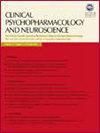Levels of Salivary Sialic Acid in Children with Autism Spectrum Disorder; Could It Be Related to Stereotypes and Hyperactivity?
IF 2.4
4区 医学
Q3 NEUROSCIENCES
引用次数: 9
Abstract
Objective Sialic acid (Sia) is an essential nutrient for brain development, learning, memory and cognition and plays a role in neurodevelopment of infants. The aim of this study was to determine whether Sia levels are significantly associated with the autism spectrum disorder (ASD). Methods Forty-six ASD children and 30 typically developing children aged 3 to 10 years were included in the study. Behavioral symptoms in ASD children was assessed by the Autism Behavior Checklist (AuBC), the Childhood Autism Rating Scale, and the Aberrant Behavior Checklist (ABC). After the collection of saliva samples, the supernatant was separated. All the samples kept at −80°C until Sia analysis was done. Results Sia level was found to be significantly lower in the ASD group when compared to healthy controls (p = 0.013). There was no correlation between severity of ASD and salivary Sia levels. We found a negative correlation between AuBC scores and Sia levels and a negative correlation in both ABC Stereotypic Behavior and Hyperactivity/Noncompliance subscales with Sia levels in ASD group. Conclusion The obtained data indicate that Sia levels could have an effect on autism-like behaviors, particularly on stereotypes and hyperactivity.自闭症谱系障碍患儿唾液唾液酸水平的研究它可能与刻板印象和多动症有关吗?
目的唾液酸(Sia)是婴儿大脑发育、学习、记忆和认知所必需的营养物质,在婴儿神经发育中起重要作用。这项研究的目的是确定Sia水平是否与自闭症谱系障碍(ASD)显著相关。方法选取3 ~ 10岁ASD儿童46例,正常发育儿童30例。采用《自闭症行为量表》(AuBC)、《儿童自闭症评定量表》和《异常行为量表》(ABC)对ASD儿童的行为症状进行评估。唾液样本采集后,分离上清液。所有样品保存在- 80°C,直到Sia分析完成。结果ASD组Sia水平明显低于正常对照组(p = 0.013)。ASD的严重程度与唾液Sia水平没有相关性。我们发现ASD组的AuBC评分与Sia水平呈负相关,ABC刻板行为和多动/不依从性亚量表与Sia水平呈负相关。结论Sia水平可能影响自闭症样行为,尤其是刻板印象和多动症。
本文章由计算机程序翻译,如有差异,请以英文原文为准。
求助全文
约1分钟内获得全文
求助全文
来源期刊

Clinical Psychopharmacology and Neuroscience
NEUROSCIENCESPHARMACOLOGY & PHARMACY-PHARMACOLOGY & PHARMACY
CiteScore
4.70
自引率
12.50%
发文量
81
期刊介绍:
Clinical Psychopharmacology and Neuroscience (Clin Psychopharmacol Neurosci) launched in 2003, is the official journal of The Korean College of Neuropsychopharmacology (KCNP), and the associate journal for Asian College of Neuropsychopharmacology (AsCNP). This journal aims to publish evidence-based, scientifically written articles related to clinical and preclinical studies in the field of psychopharmacology and neuroscience. This journal intends to foster and encourage communications between psychiatrist, neuroscientist and all related experts in Asia as well as worldwide. It is published four times a year at the last day of February, May, August, and November.
 求助内容:
求助内容: 应助结果提醒方式:
应助结果提醒方式:


